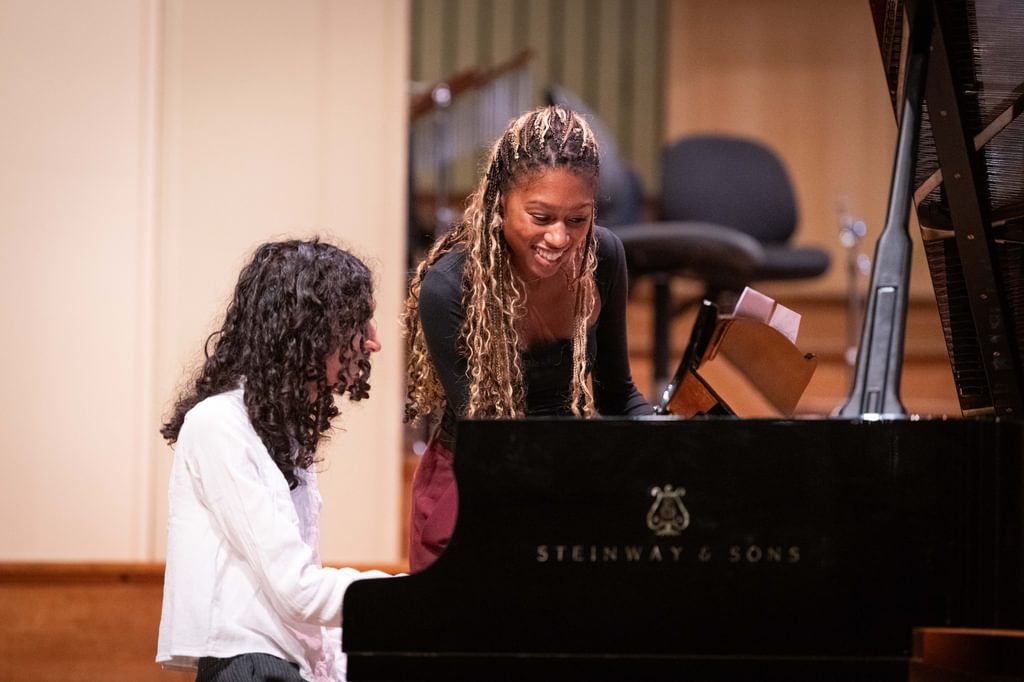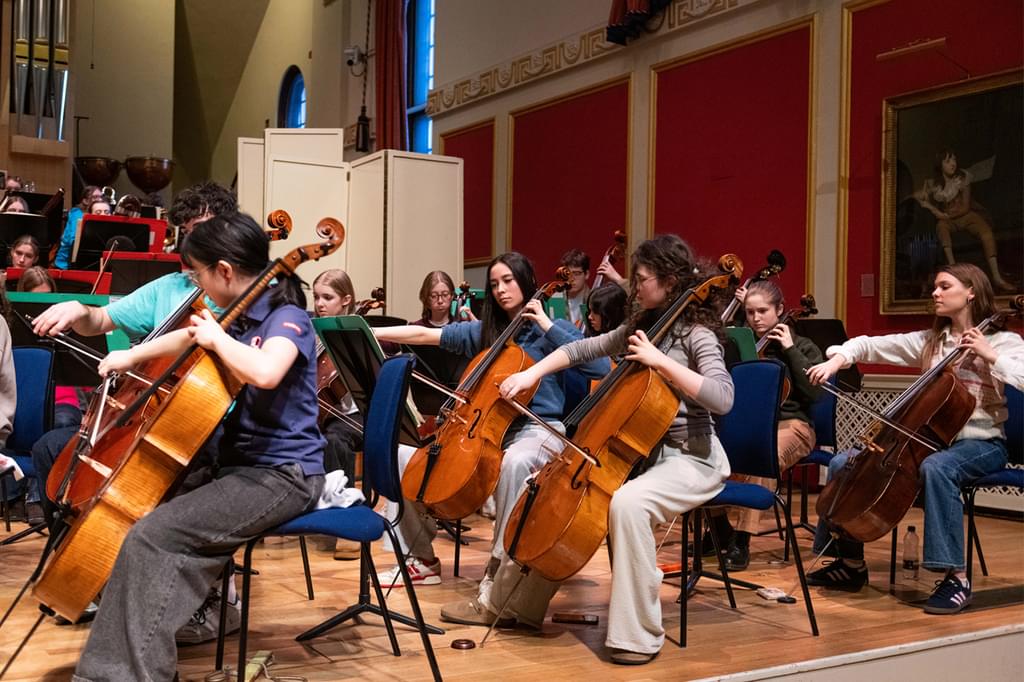
The Junior Academy course inspires and challenges talented young musicians from all backgrounds
On Saturdays, the Royal Academy of Music transforms into Junior Academy.
Young musicians aged between 12 and 18 travel from all over the UK to be part of our creative learning environment. Intensive one-to-one lessons, specialist classes and a variety of performance opportunities all add to the musical vibrancy.
‘My daughter absolutely loves Junior Academy. Not only is she growing as a musician, she is also so much more confident as a person. The students are treated as young adults, which has helped her to take responsibility and develop her independence’
Parent
Applications 2025/26
Applications are now closed for Junior Academy entry in September 2025.
The deadline for submissions for entry in September 2026 will be 1 March 2026.
We offer Principal Study lessons in:
VIOLIN | VIOLA | CELLO | DOUBLE BASS | HARP | GUITAR | FLUTE | RECORDER | OBOE | CLARINET | BASSOON | HORN | TRUMPET | TROMBONE | TUBA | PERCUSSION | PIANO | ORGAN | CLASSICAL ACCORDION | VOICE | COMPOSITION
Second Study lessons may also be available in the above list with the addition of saxophone and conducting.
Weekly activities are varied and might include:
- A one-hour lesson on your main instrument with a specialist teacher.
- Second Study lessons, where appropriate (not included in the course fee).
- Chamber ensembles coached by one of our teachers or a visiting musician.
- Academic classes to develop aural and theory skills, general musicianship and an understanding of style and form.
- Rehearsals and performances of standard orchestral repertoire.
- SATB and chamber choirs.
- Masterclasses and workshops with distinguished performers.
- A variety of performance opportunities for solo, chamber, choir and orchestral players, from weekly informal performance platforms to major concerts in the Academy and in venues across London.
Other opportunities may include keyboard skills, composition, theory and Alexander Technique depending on first study and availability. There are regular competitions for each discipline adjudicated by prominent visiting musicians.
We are looking primarily for musical potential. The standard of playing of successful applicants will depend very much on such factors as age and length of study, but as a rough guide we would expect ABRSM Grade 6–7 distinction level (or equivalent standard) from our younger applicants.
Students are admitted to the Junior Academy from age twelve upwards, and usually remain at the Junior Academy until they are eighteen or nineteen, subject to progress. Under normal circumstances we do not admit students for a period of less than two years of study.
AUDITION FEE
If you are invited to a live audition you will be asked to pay a £40 audition fee.
Academic Year 2025/26
| per term | per annum | |
| Junior Academy Course | £1,371 | £4,113 |
| 2nd Study (30 minutes x 10 weeks) | £320 | £960 |
ACADEMIC YEAR 2024/25
| per term | per annum | |
Junior Academy Course | £1,310 | £3,930 |
| 2nd Study (30 minutes x 10 weeks) | £300 | £900 |
Fees are payable each term on receipt of an invoice.
A full term’s notice in writing is required for withdrawal of a pupil from the course. A term’s fee will be charged in lieu of such notice.
Auditions for entry will be a two part process, with a video submission followed by a live recall for selected applicants.
The closing date for the application form and the video submission will be 1 March 2026.
The 2026 application form and further information will be available on the website in early January 2026.
VIDEO SUBMISSIONS
First study instrument students should provide:
- A short introduction (2-3 mins) featuring a little bit about you, the importance of music in your life, why you wish to come to Junior Academy and what you hope to achieve in the future.
- A Recording of 2 contrasting pieces (10 mins max).
First Study composition students should provide:
- A short introduction explaining what inspires you, the music you enjoy listening to, favourite composers and styles of music and any other information that is relevant to the way you approach creative work.
- A Portfolio of your Composition work containing three compositions, including a score of each piece and recording (if available). Please include short written introductions, outlining the ideas and stimulus behind each composition.
- A recording of two contrasting pieces on your Second Study instrument (10 mins max).
Second Study (optional)
- If you wish to be considered for second study tuition at the Academy please also submit one short video (5 mins max) on a separate video file.
If you are selected for a live audition you can play the same two pieces or choose to play different ones.
Your pieces can be recorded with an accompanist if you would like, but it is not expected. Please do not use a backing track. Your pieces can be in separate videos or in one continuous video.
Please see Self Tape Advice for further assistance on how to produce your video.
SECOND ROUND AUDITIONS - Live
If you are invited to a second round live audition, we would expect candidates to be excused from school to attend their audition if necessary. We are not able to accept requests for specific audition dates.
The audition panel would like to discuss the importance of music in your life, why you wish to come to Junior Academy and what you hope to achieve in the future.
Performance applicants should prepare two contrasting pieces on their first study only. They will also be given sight-reading and aural tests. We will not be hearing second studies live.
Composers should submit a collection of recent compositions in advance. We expect composers to offer a second-study instrument at audition.
If you are invited to a live audition you will be asked to pay a £40 audition fee.
Applications for the Junior Academy course starting in September 2026 will open in early January 2026.



